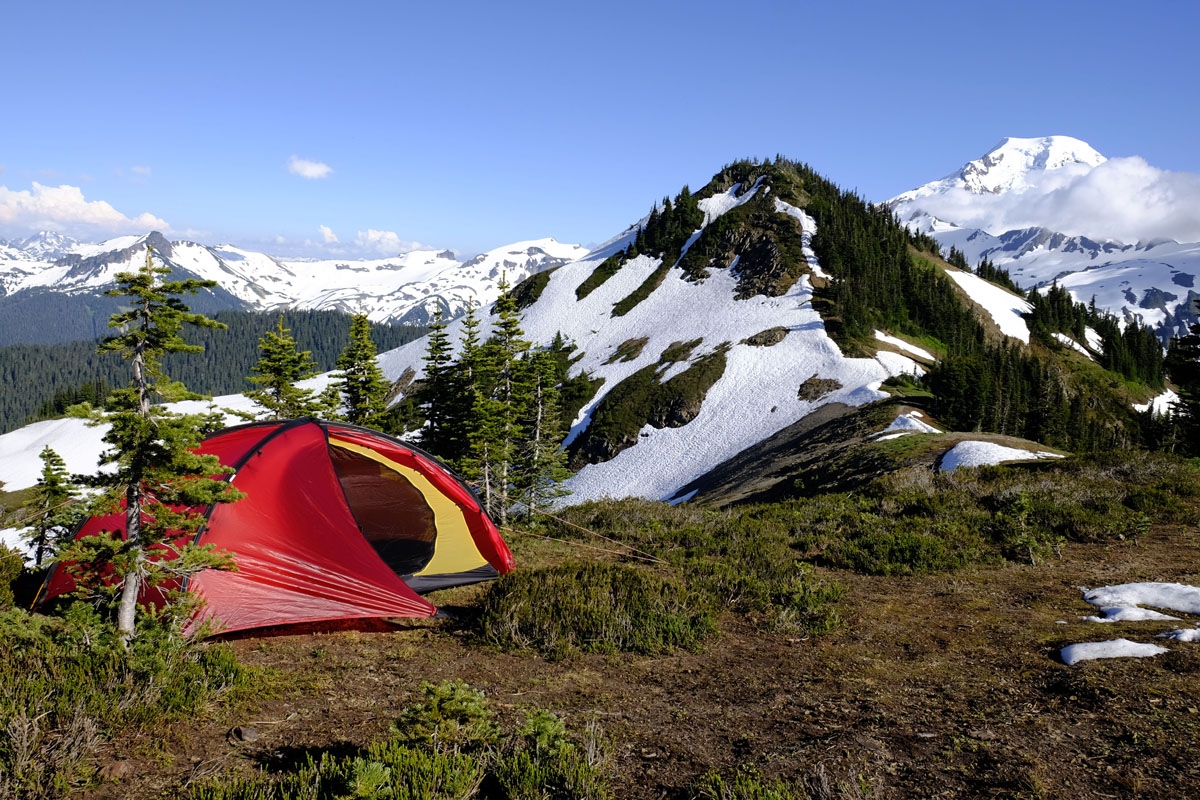
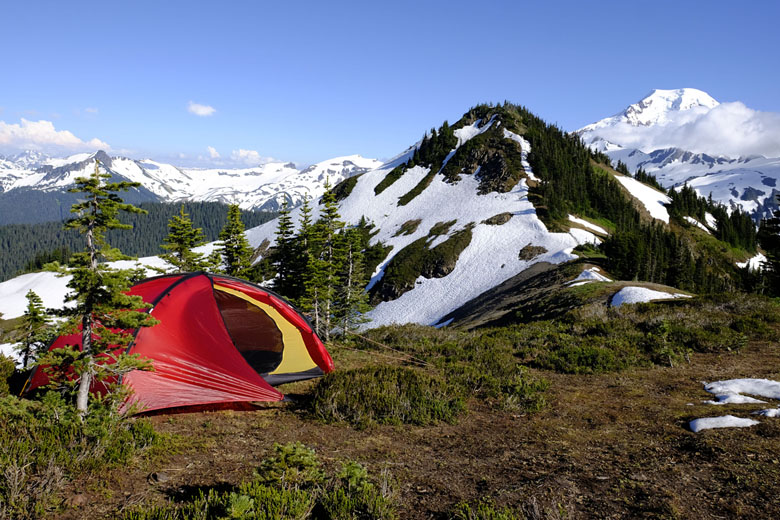
David Wilkinson


David Wilkinson
Until this year, the Anjan was Hilleberg's lightest 2-person tent model at 4 pounds (1.8 kilograms) packed weight. Enter the Niak, a new 2-person tent that weighs 3 pounds 12 ounces (1.5 kilograms), yet still offers impressive weather protection and the same level of quality that we’ve come to expect from the Swedish tentmaker. We tested the Niak high in Washington’s Mt. Baker Wilderness and along the northern section of the Pacific Crest Trail, and came away impressed—despite the price, but you won’t find a better true 3-season tent. Below we break down the Niak's weather protection, ventilation, interior space, build quality, and more. To see how the Niak stacks up, check out our comparison table and article on the best backpacking tents.
The Niak 2P is one of Hilleberg’s Yellow Label tents, which are the lightest weight models the company makes and listed as 3-season (red and black label are all-season tents). To put things in perspective, Hilleberg is the standard bearer for weather-resistant tents. The company claims to have “never subscribed to the traditional concept of 3-season tents, which always seemed to equate to summer tents.” Yellow Labels are true 3-season tents for really tough climates like Scandinavia. This means that they weigh and cost more than mesh-dominated 3-season tents from most American gear companies, but are significantly stronger too.
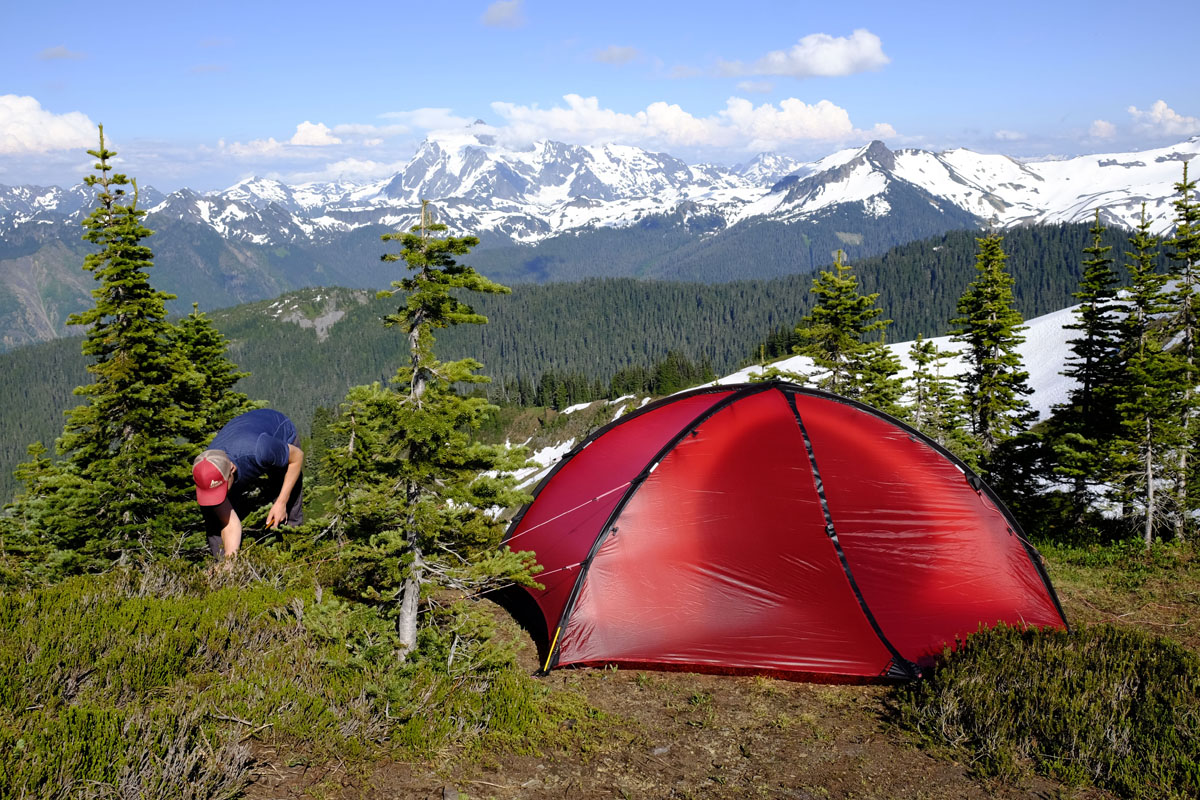
Comparatively, the Niak offers outstanding weather protection. It uses the same 9mm DAC NSL poles in the exterior sleeves as Hilleberg’s all-season Red Label tents, but with lighter fabrics for the inner and outer parts of the tent (Hilleberg uses a double-wall design with an inner tent that is breathable and water repellant along with a waterproof outer). The result is a “lightweight” tent by Hilleberg standards but one that is much stronger and better suited to handle wind and rain than almost all other 3-season models.
On our early summer backpacking trip in the Mt. Baker Wilderness, we camped in exposed alpine conditions surrounded by recent snowmelt. The Niak performed admirably with no notable shortcomings. And on a follow up trip along the PCT in the North Cascades, it easily withstood a soaking overnight rain. It was not particularly windy on either trip and therefore we did not test the full strength of the guylines, but we have used them with other Hilleberg tents (the Nallo 2) during sustained, heavy winds, and they were extremely impressive at keeping the tent structure intact.
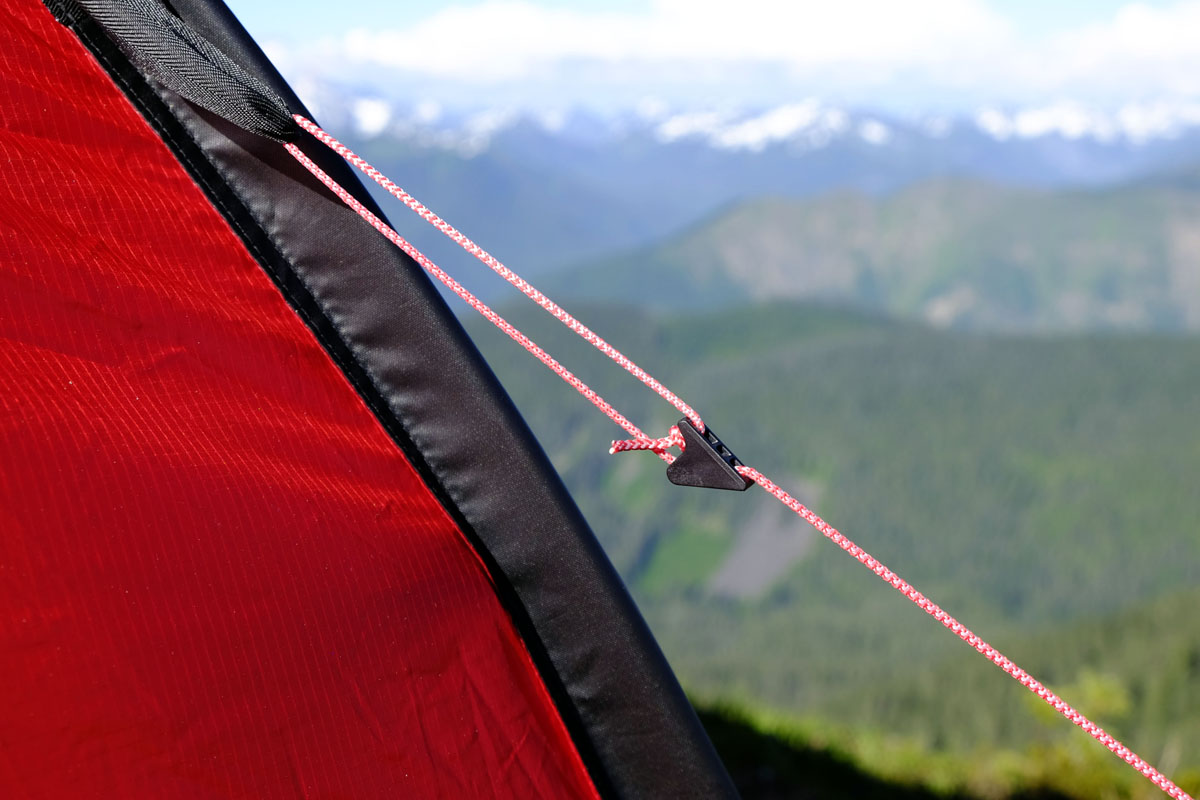
In general, Hilleberg tents are not great ventilators. They are built to withstand tough weather, and those climates usually don’t get hot. We used the Nallo 2 (Black Label) on an extended trek in Nepal and it definitely was at its best during the alpine section in the high Himalaya as opposed to the lowland jungles that were hot and humid. If you only plan to backpack during the summer in mild conditions, the Niak is just too much tent.
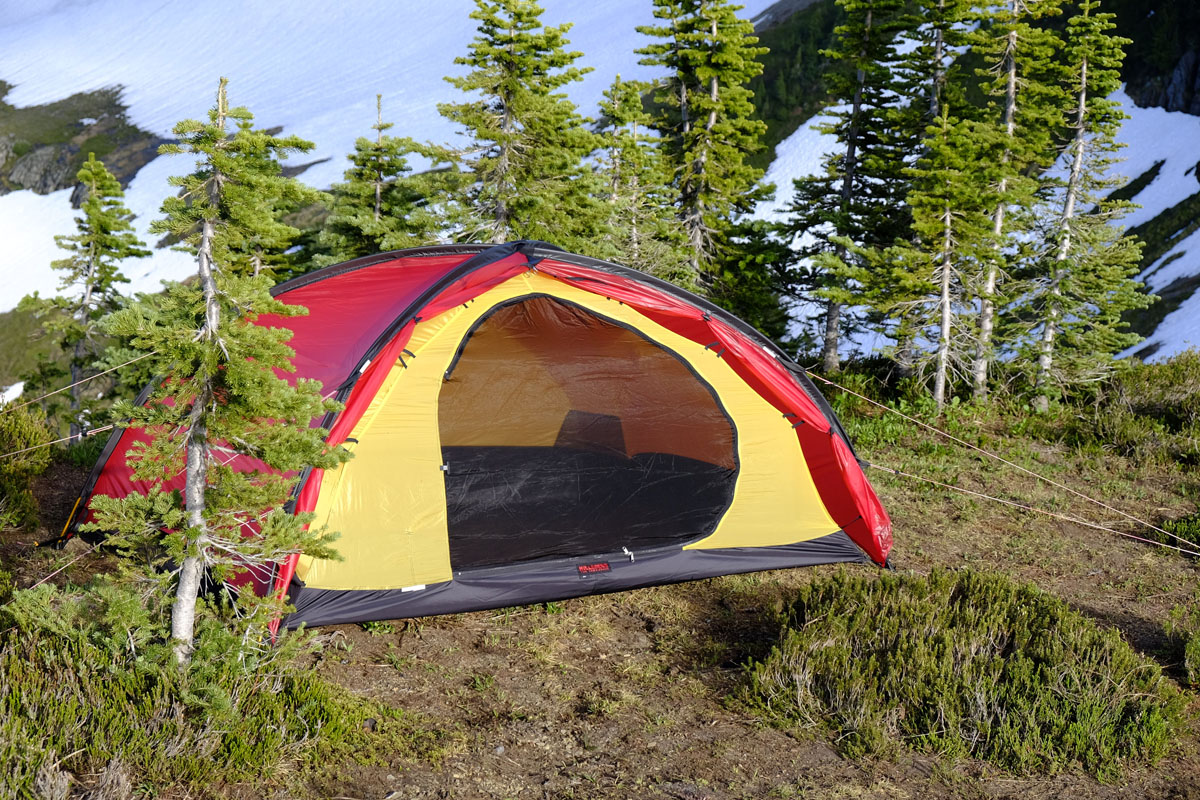
Unlike leading 3-season tents such the MSR Hubba Hubba NX and Big Agnes Copper Spur, you won’t find a lot of mesh on the Niak (only the door). The two-tent system is designed to breathe and release moisture through the space between the outer tent and the ground. In practice, this works fine if the temperature doesn’t get too hot. On our early summer trip in Washington, the peak temperature was around 75° Fahrenheit (25° Celsius) and dropped into the low 40s (around 5° Celsius) at night. Condensation was not an issue for us—moisture only collected on the exterior of the outer tent as temperatures dropped—but we would expect the interior of the tent to get damp had it got much warmer. The lack of mesh helps the strength and tear resistance of the tent, but air doesn’t circulate to the same degree as mesh-dominant models.
In warm weather without precipitation, the single door is surprisingly large and airy and it’s nice to leave it open at night—you can zip up and roll back one or both of the vestibule sections. The mesh is on the darker side and visibility isn’t as good as some other tents, but this is one way to increase ventilation in summer-like conditions.
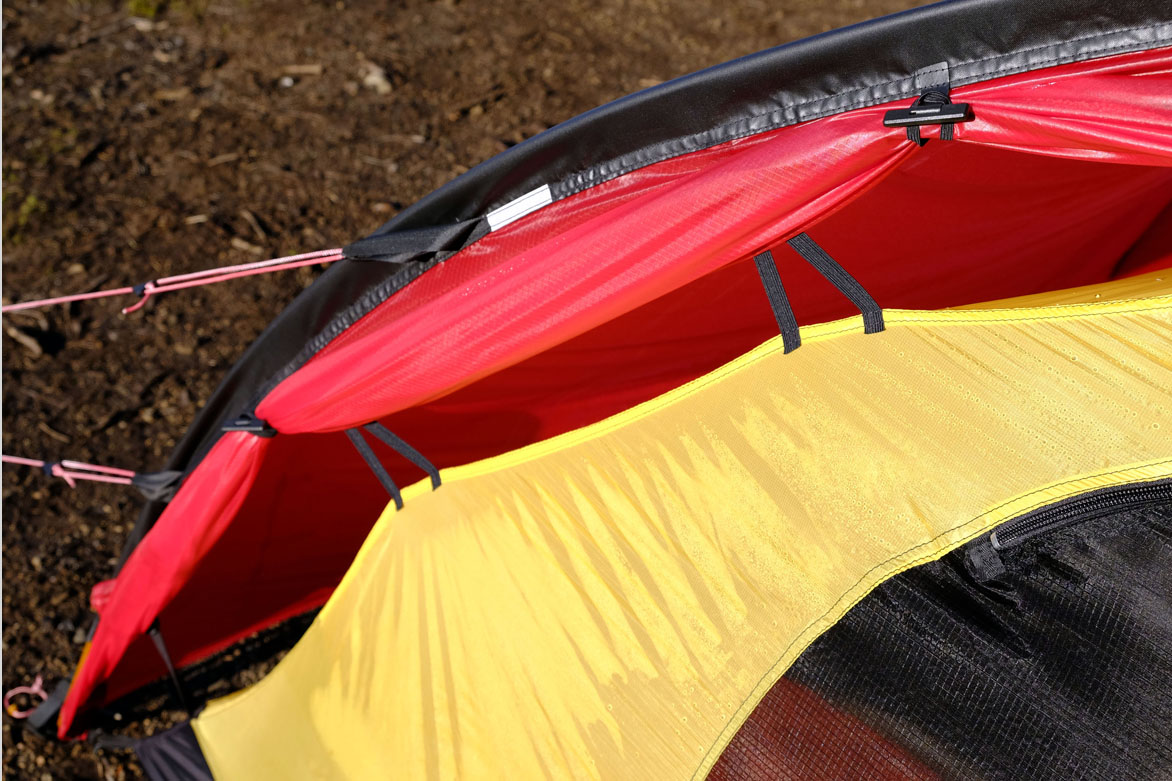
Hilleberg also sells mesh inner tents for many of their models, including the Niak. You don’t save much in the way of weight, which is surprising, but you do get increased ventilation in warm weather. The inner tent for the Niak is $182 and weighs 1 pound, 7 ounces (670 grams). Interestingly, you can use the inner tent as a standalone shelter when the weather is clear.
One area that surprised us with the Niak was the amount of interior space. It was originally billed as a 1.5-person tent, and Hilleberg plays up the concept of using it as a solo tent on their website. Compared to other 2-person tents, and particularly of the ultralight variety, the Niak indeed is suitable for 2 people. The 28 sq. ft. (2.6 sq. m) of interior space is slightly less than other 2-person tents in its weight range (see our full tent comparison chart), but not by much. With two average sized adults sleeping side by side (and a dog and backpacks under the vestibule), it didn’t feel overly cramped. More, the walls are reasonably vertical, so it is easy to sit up and move around in the night.
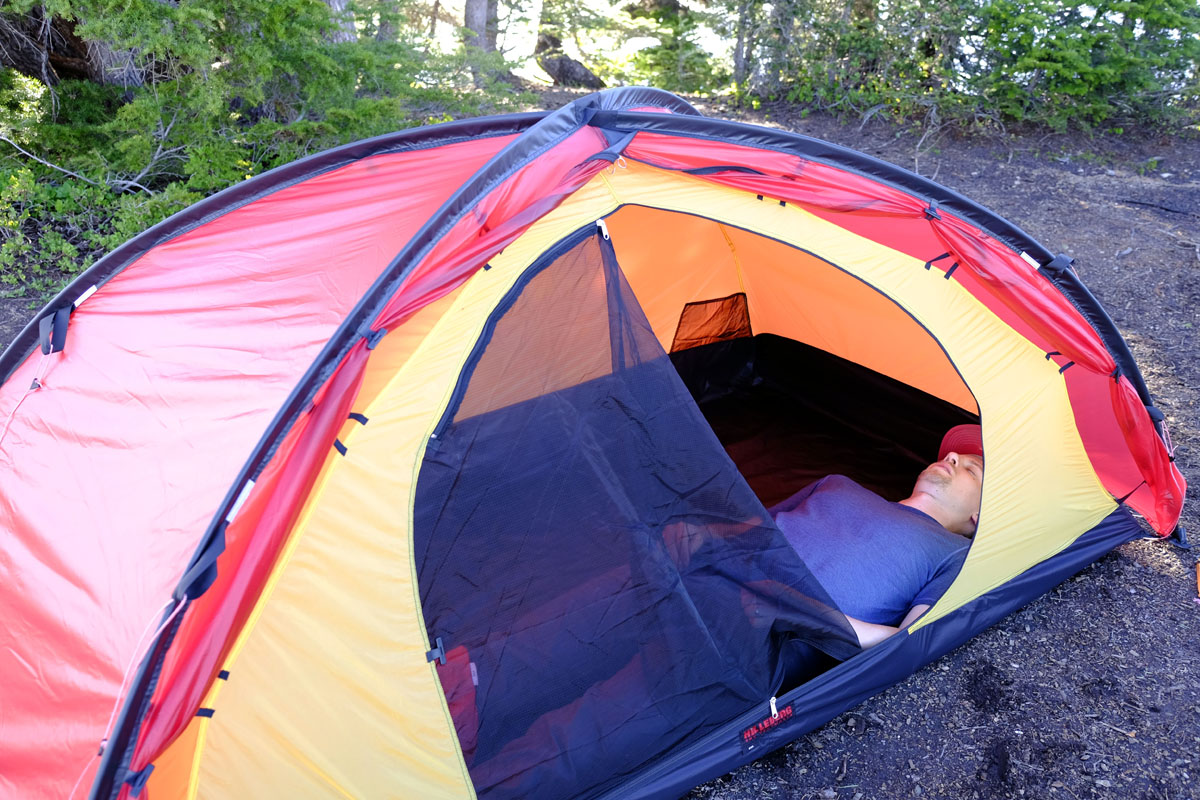
The downside of using the Niak for two (or three with a canine companion) is the single door—this means that one person has to crawl over the other to enter and exit. This isn’t a deal breaker for us but definitely is a consideration (and it also depends who you’re camping with). As a solo tent, the Niak offers ample space and would be ideal for storing your gear inside the tent or bringing along a canine companion.
Setting up the Niak is easy: it has a two-pole system with sleeves that extend the length of the tent, and the DAC stakes are top notch. And unlike most tents, you actually get enough stakes to use all of the guylines. The Niak has a single vestibule and four guylines that tighten down firmly for added wind protection. There is an optional footprint, and while it’s not necessarily required due to the quality of the floor material, the ground sheet does offer another level of protection from tears.
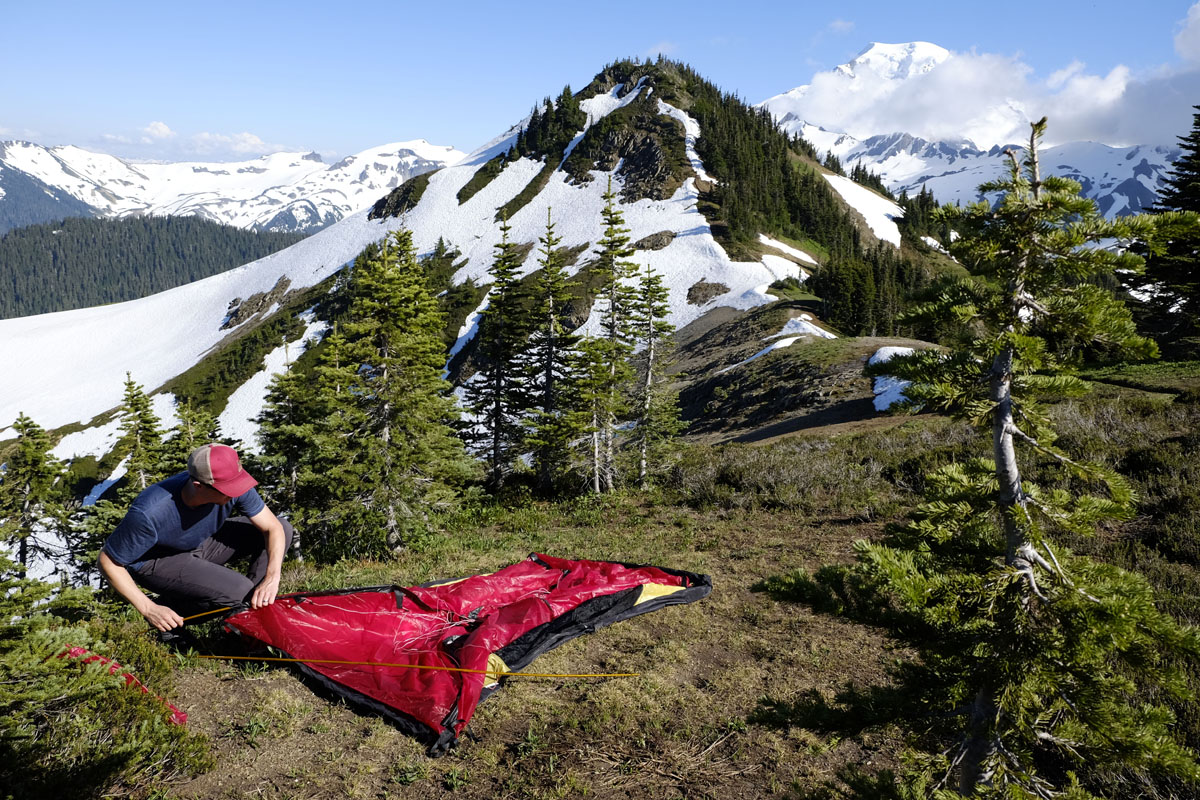
The carrying bag for the Niak is cylindrical and easy to fit into a pack vertically. As always, some people choose to separate out the tent from its main carry bag to divvy up the weight or distribute the components better in their pack. The Niak does have a considerably smaller packed size than the 4-season Nallo 2, which almost requires separating out the various parts for a reasonable packed size.
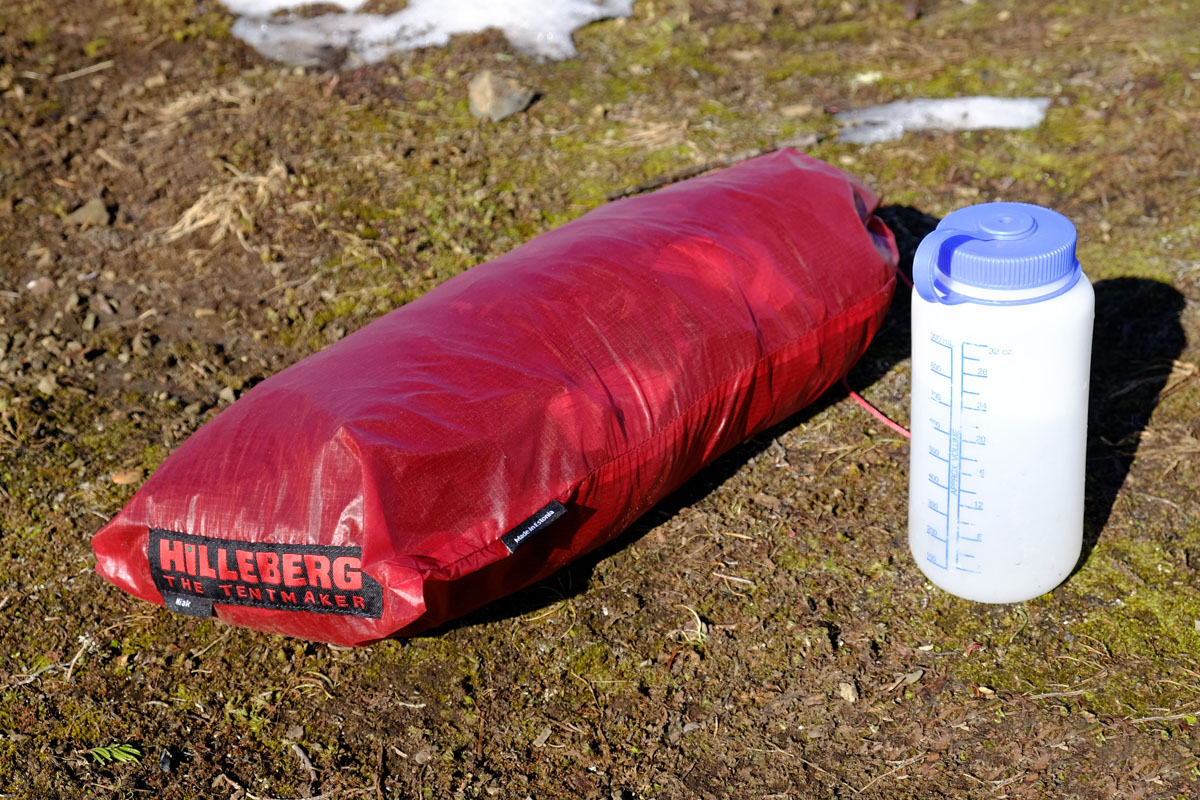
As expected from Hilleberg, the build quality of the Niak is fantastic (you would so hope for $730). The poles are among the best in the industry—Hilleberg wasn’t satisfied going thinner than the 9mm poles they use on their Red Label tents and therefore that’s what you get on the Niak. They probably could have shaved a couple of ounces for a better spec sheet but went with quality instead, which we like. The stakes are the best in the industry, and the tent fabrics are as good as it gets both in terms of durability and performance. We’ve never had quality control issues with Hilleberg tents and don’t expect to with the Niak.
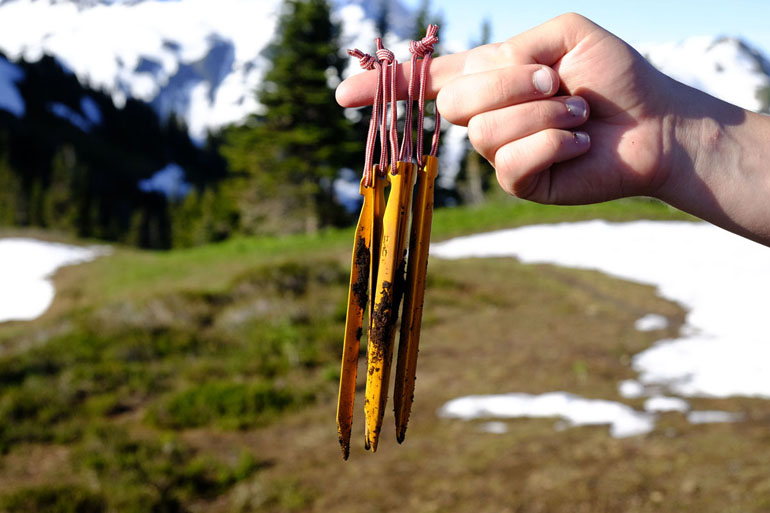
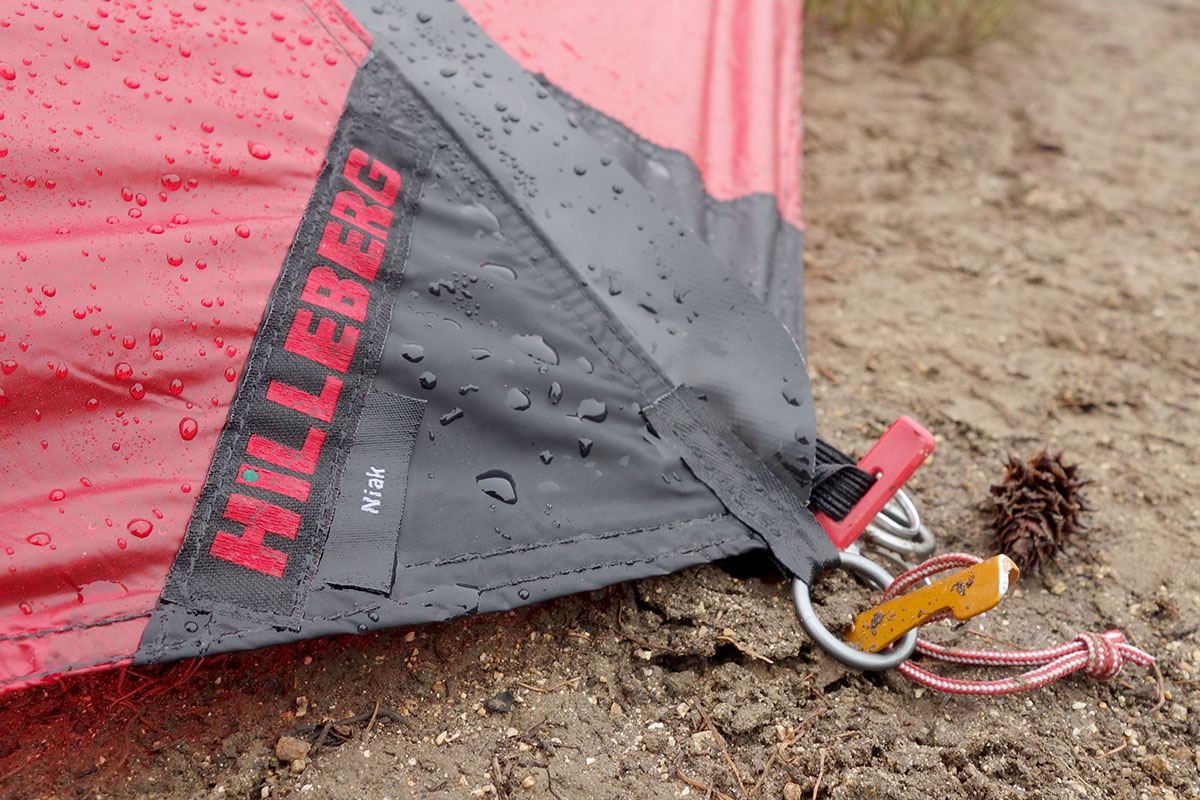
| TENT | PRICE | WEIGHT | PACKED | HEIGHT | FLOOR | Doors |
|---|---|---|---|---|---|---|
| Hilleberg Niak | $730 | 3 lbs. 12 oz. | 18 x 6 in. | 39 in. | 28 sq. ft. | 1 |
| Hilleberg Anjan | $645 | 4 lbs. 0 oz. | 19 x 4 in. | 39 in. | 30.1 sq. ft. | 1 |
| Nemo Kunai 2P | $500 | 4 lbs. 10 oz. | 16 x 7.5 in. | 42 in. | 27 sq. ft. | 1 |
| MSR Hubba Hubba NX | $400 | 3 lbs. 13 oz. | 18 x 6 in. | 39 in. | 29 sq. ft. | 2 |
| Hilleberg Nallo | $735 | 5 lbs. 5 oz. | 20 x 5 in. | 39 in. | 30.1 sq. ft. | 1 |
Hilleberg is unique in that much of its competition comes from within. These tents are expensive, extremely well built, and really in a different category than the rest of the market.
Many people considering the Niak also may be looking at the Hilleberg Anjan. Like the Niak, the Anjan is a Yellow Label 2-person tent, but it has a tunnel construction with one door at the end. This design makes the Anjan easier to use for two people and it has slightly more floor area at 30.1 square feet (2.8 square meters) instead of 28 square feet. (2.6 square meters) of the Niak. The Anjan is 4 oz. heavier at 4 lbs. and cheaper at $645. Both are excellent options and it’s a close call. For solo campers we prefer the dome design of the Niak and like the weight savings too, but those who use the tent primarily for two people may want the door design and extra space of the Anjan.
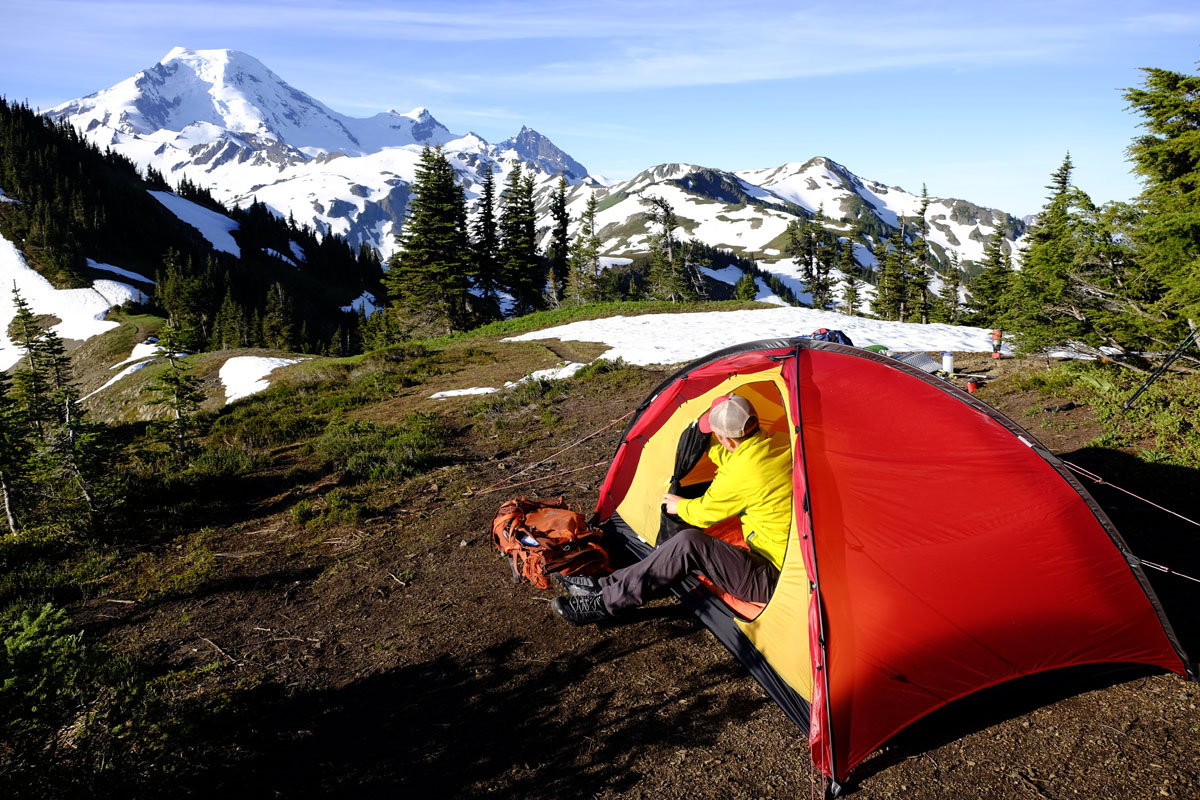
If weight is one of your main concerns—people backpacking or thru hiking in the summer—there are a number of lighter options out there. We like the MSR Hubba Hubba NX most in the 2-person, 3-season category (see our article on the best backpacking tents), but as Hilleberg correctly posited, it’s really best as a summer tent and for mild shoulder season weather. If you’re headed for challenging conditions in places like Scandinavia, Alaska, Patagonia, or high alpine terrain in the Lower 48, a Hilleberg will shine.
If you’re thinking about buying gear that we’ve reviewed on Switchback Travel, you can help support us in the process. Just click on any of the seller links above, and if you make a purchase, we receive a small percentage of the transaction. The cost of the product is the same to you but this helps us continue to test and write about outdoor gear. Thanks and we appreciate your support!
Depending on the seller, most products ship free in the United States on orders of $50 or more. International shipping availability and rates vary by seller. The pricing information on this page is updated hourly but we are not responsible for inaccuracies.